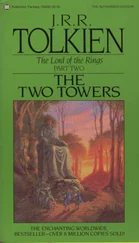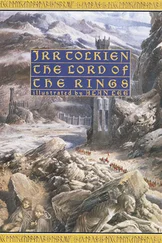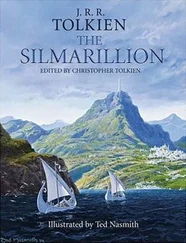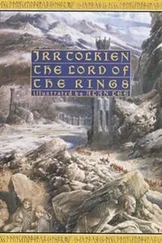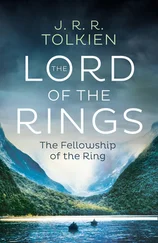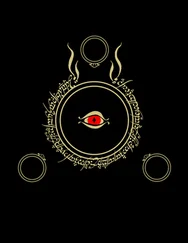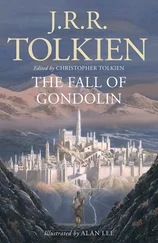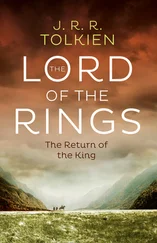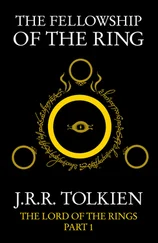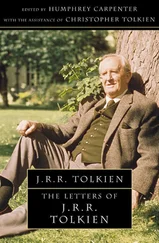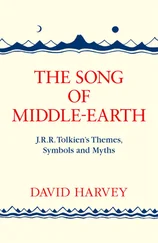I have removed a number of errors in the text and index which until now have escaped correction in the hardback printings (only) of The Silmarillion . Chief among these are those that concern the numbering in sequence of certain of the rulers of Númenor (for these errors and an explanation of how they arose see Unfinished Tales (1980), p.226, note 11, and The Peoples of Middle-earth (1996), p.154, §31).
Christopher Tolkien 1999
FROM A LETTER BY J.R.R. TOLKIEN TO MILTON WALDMAN, 1951
My dear Milton,
You asked for a brief sketch of my stuff that is connected with my imaginary world. It is difficult to say anything without saying too much: the attempt to say a few words opens a floodgate of excitement, the egoist and artist at once desires to say how the stuff has grown, what it is like, and what (he thinks) he means or is trying to represent by it all. I shall inflict some of this on you; but I will append a mere résumé of its contents: which is (may be) all that you want or will have use or time for.
In order of time, growth and composition, this stuff began with me – though I do not suppose that that is of much interest to anyone but myself. I mean, I do not remember a time when I was not building it. Many children make up, or begin to make up, imaginary languages. I have been at it since I could write. But I have never stopped, and of course, as a professional philologist (especially interested in linguistic aesthetics), I have changed in taste, improved in theory, and probably in craft. Behind my stories is now a nexus of languages (mostly only structurally sketched). But to those creatures which in English I call misleadingly Elves are assigned two related languages more nearly completed, whose history is written, and whose forms (representing two different sides of my own linguistic taste) are deduced scientifically from a common origin. Out of these languages are made nearly all the names that appear in my legends. This gives a certain character (a cohesion, a consistency of linguistic style, and an illusion of historicity) to the nomenclature, or so I believe, that is markedly lacking in other comparable things. Not all will feel this as important as I do, since I am cursed by acute sensibility in such matters.
But an equally basic passion of mine ab initio was for myth (not allegory!) and for fairy-story, and above all for heroic legend on the brink of fairy-tale and history, of which there is far too little in the world (accessible to me) for my appetite. I was an undergraduate before thought and experience revealed to me that these were not divergent interests – opposite poles of science and romance – but integrally related. I am not ‘learned’ [1] Though I have thought about them a good deal.
in the matters of myth and fairy-story, however, for in such things (as far as known to me) I have always been seeking material, things of a certain tone and air, and not simple knowledge. Also – and here I hope I shall not sound absurd – I was from early days grieved by the poverty of my own beloved country: it had no stories of its own (bound up with its tongue and soil), not of the quality that I sought, and found (as an ingredient) in legends of other lands. There was Greek, and Celtic, and Romance, Germanic, Scandinavian, and Finnish (which greatly affected me); but nothing English, save impoverished chap-book stuff. Of course there was and is all the Arthurian world, but powerful as it is, it is imperfectly naturalized, associated with the soil of Britain but not with English; and does not replace what I felt to be missing. For one thing its ‘faerie’ is too lavish, and fantastical, incoherent and repetitive. For another and more important thing: it is involved in, and explicitly contains the Christian religion.
For reasons which I will not elaborate, that seems to me fatal. Myth and fairy-story must, as all art, reflect and contain in solution elements of moral and religious truth (or error), but not explicit, not in the known form of the primary ‘real’ world. (I am speaking, of course, of our present situation, not of ancient pagan, pre-Christian days. And I will not repeat what I tried to say in my essay, which you read.)
Do not laugh! But once upon a time (my crest has long since fallen) I had a mind to make a body of more or less connected legend, ranging from the large and cosmogonic, to the level of romantic fairy-story – the larger founded on the lesser in contact with the earth, the lesser drawing splendour from the vast backcloths – which I could dedicate simply to: to England; to my country. It should possess the tone and quality that I desired, somewhat cool and clear, be redolent of our ‘air’ (the clime and soil of the North West, meaning Britain and the hither parts of Europe: not Italy or the Aegean, still less the East), and, while possessing (if I could achieve it) the fair elusive beauty that some call Celtic (though it is rarely found in genuine ancient Celtic things), it should be ‘high’, purged of the gross, and fit for the more adult mind of a land long now steeped in poetry. I would draw some of the great tales in fullness, and leave many only placed in the scheme, and sketched. The cycles should be linked to a majestic whole, and yet leave scope for other minds and hands, wielding paint and music and drama. Absurd.
Of course, such an overweening purpose did not develop all at once. The mere stories were the thing. They arose in my mind as ‘given’ things, and as they came, separately, so too the links grew. An absorbing, though continually interrupted labour (especially since, even apart from the necessities of life, the mind would wing to the other pole and spend itself on the linguistics): yet always I had the sense of recording what was already ‘there’, somewhere: not of ‘inventing’.
Of course, I made up and even wrote lots of other things (especially for my children). Some escaped from the grasp of this branching acquisitive theme, being ultimately and radically unrelated: Leaf by Niggle and Farmer Giles , for instance, the only two that have been printed. The Hobbit , which has much more essential life in it, was quite independently conceived: I did not know as I began it that it belonged. But it proved to be the discovery of the completion of the whole, its mode of descent to earth, and merging into ‘history’. As the high Legends of the beginnings are supposed to look at things through Elvish minds, so the middle tale of the Hobbit takes a virtually human point of view – and the last tale blends them.
I dislike Allegory – the conscious and intentional allegory – yet any attempt to explain the purport of myth or fairytale must use allegorical language. (And, of course, the more ‘life’ a story has the more readily will it be susceptible of allegorical interpretations: while the better a deliberate allegory is made the more nearly will it be acceptable just as a story.) Anyway all this stuff [2] It is, I suppose, fundamentally concerned with the problem of the relation of Art (and Sub-creation) and Primary Reality.
is mainly concerned with Fall, Mortality, and the Machine. With Fall inevitably, and that motive occurs in several modes. With Mortality, especially as it affects art and the creative (or as I should say, sub-creative) desire which seems to have no biological function, and to be apart from the satisfactions of plain ordinary biological life, with which, in our world, it is indeed usually at strife. This desire is at once wedded to a passionate love of the real primary world, and hence filled with the sense of mortality, and yet unsatisfied by it. It has various opportunities of ‘Fall’. It may become possessive, clinging to the things made as its own, the sub-creator wishes to be the Lord and God of his private creation. He will rebel against the laws of the Creator – especially against mortality. Both of these (alone or together) will lead to the desire for Power, for making the will more quickly effective, – and so to the Machine (or Magic). By the last I intend all use of external plans or devices (apparatus) instead of developments of the inherent inner powers or talents – or even the use of these talents with the corrupted motive of dominating: bulldozing the real world, or coercing other wills. The Machine is our more obvious modern form though more closely related to Magic than is usually recognised.
Читать дальше


